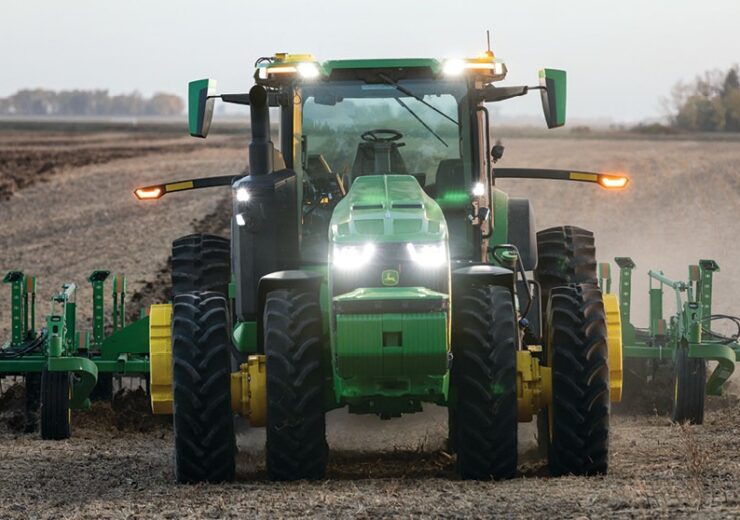The autonomous tractor is fitted with six pairs of stereo cameras for facilitating 360-degree detection of obstacles and distance calculation

A fully autonomous tractor from John Deere. (Credit: Deere & Company)
John Deere has unveiled a fully autonomous tractor during the ongoing 2022 Consumer Electronics Show (CES) in Las Vegas, US.
Deere & Company, the owner of the John Deere brand, stated that the fully self-driving tractor is ready to be produced at a large scale.
Set to have a commercial launch later this year, the vehicle will combine the company’s 8R tractor, GPS guidance system, TruSet-enabled chisel plow, and new advanced technologies.
The autonomous tractor is fitted with six pairs of stereo cameras for facilitating 360-degree detection of obstacles and distance calculation.
Images taken by the cameras are sent through a neural network which is said to classify all the pixels in nearly 100 milliseconds. This helps the tractor determine whether it should continue to move or stop based on detecting an obstacle.
Furthermore, the fully autonomous tractor can constantly check its position relative to a geofence. This allows the tractor to operate where it is desired to, while staying within less than an inch of accuracy, said Deere & Company.
For using the self-driving tractor, farmers have to configure it for autonomous operation and with John Deere Operations Center Mobile, can swipe from left to right for starting it. The vehicle’s status can be monitored by farmers from their mobile devices.
John Deere Operations Center Mobile gives farmers access to live video, images, data as well as metrics. Apart from that, farmers get the controls to adjust speed, depth, and others by using the mobile interface.
Farmers will also get remote notifications in the case of any job quality anomalies or health issues with the tractor. Besides, they can make adjustments to optimise the autonomous tractor’s performance.
Deere & Company said: “The autonomous tractor serves a specific purpose: feeding the world. The global population is expected to grow from about 8 billion to nearly 10 billion people by 2050, increasing the global food demand by 50 per cent.
“Furthermore, farmers must feed this growing population with less available land and skilled labour, and work through the variables inherent in farming like changing weather conditions and climate, variations in soil quality and the presence of weeds and pests.”


